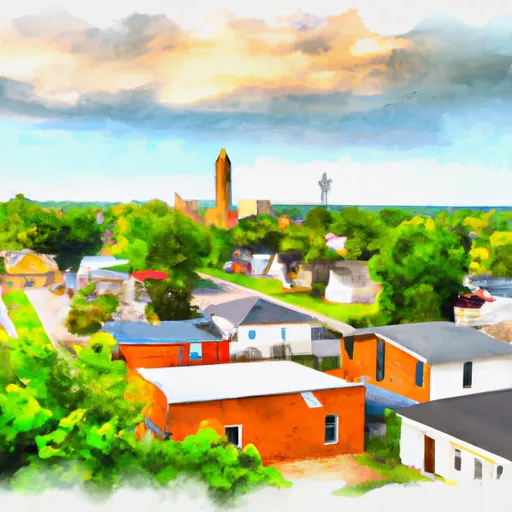°F
°F
mph
Windspeed
%
Humidity











Smithfield, Ohio is a small town located in Jefferson County. It experiences a humid continental climate, characterized by warm summers and cold winters. Average temperatures range from 25°F (-4°C) in winter to 85°F (29°C) in summer. The region receives approximately 40 inches of rainfall annually, with the majority occurring during the warmer months.
The hydrology of Smithfield is primarily influenced by the Ohio River, located just 8 miles to the west. The river provides opportunities for water-related activities such as boating, fishing, and swimming. Additionally, Smithfield is surrounded by several small lakes and creeks, which offer tranquil settings for fishing and canoeing.
Outdoor enthusiasts in Smithfield can explore the numerous parks and recreational areas, such as the Smithfield Community Park, which features walking trails, picnic areas, and playgrounds. The nearby Jefferson Lake State Park is also a popular destination for camping, hiking, and wildlife observation. Additionally, the region's scenic countryside and rolling hills provide opportunities for biking and horseback riding.
Overall, Smithfield, Ohio offers a pleasant climate, abundant water resources, and various outdoor recreation opportunities for residents and visitors alike.
Weather Forecast
Smithfield receives approximately 1040mm of rain per year, with humidity levels near 81% and air temperatures averaging around 11°C. Smithfield has a plant hardyness factor of 6, meaning plants and agriculture in this region thrive during a short period during spring and early summer. Most plants will die off during the colder winter months.
Regional Streamflow Levels
24
Cubic Feet Per Second
15
Cubic Feet Per Second
24
Cubic Feet Per Second
105
Cubic Feet Per Second
Nearby Camping
| Camping Area | Reservations | Toilets | Showers |
|---|---|---|---|
| Tomlinson Run State Park | |||
| Guilford Lake State Park | |||
| Mosquito Lake State Park | |||
| Jefferson Lake State Park | |||
| Beaver Creek State Park | |||
| Mill Creek - Berlin Reservoir |



